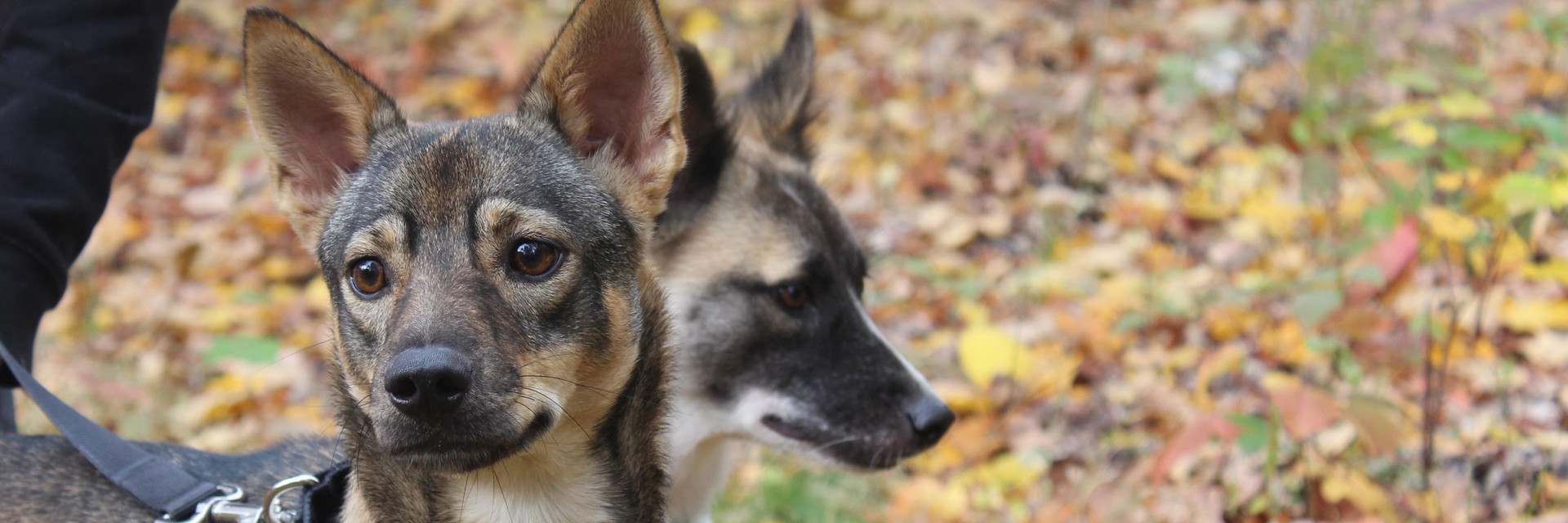
Harvest Mites in Pets
Tiny creature, irritating bite – how pet owners can protect their furry friends
In late summer and throughout autumn, dog and cat owners should be on the alert against harvest mites (Neotrombicula autumnalis). Harvest mites lurk in meadows, fields and gardens and on the edges of woodland, as well as in damp, sunlit places, waiting for suitable hosts. Animals that become infested by the mites are tormented by itchy skin. If you want to protect your pet, during the height of the season you should avoid walking your dog in areas where harvest mites live – and keep your cat indoors.
Learn more
What are harvest mites?
The harvest mite, also known as the autumn grass mite, is related to spiders. It is microscopically small and orange-red in colour. Like all mites, it goes through different developmental cycles: an egg develops into a larva, then into a nymph (the 'juvenile') and finally into an adult mite. It is only the larva that feeds on warm-blooded animals, so it is only a risk to your pet during this stage of its development. The larva is active during the day and especially on dry, sunny days. It particularly affects its hosts on the parts of the body that come into contact with grass or plants: paws, legs, belly, chest and muzzle. There it attaches itself to the animal and begins to feed on it. To do this, it pierces the skin of its host with its small, hook-shaped fangs and injects powerful enzymes that digest the skin cells, which then liquefy and are consumed by the larvae.
Symptoms of infestation
During the relatively short period of infestation (2-3 days), the affected animal suffers from distressing itching, which may persist even when the larva is no longer on the skin. This is triggered by an allergic reaction to the saliva or enzymes that the larva releases into the skin when it bites. The dog or cat tries to relieve the itching by scratching, gnawing or licking the affected area, which can lead to open sores in serious cases. Small red wheals can be observed on the skin. Depending on the number of larvae on the animal, you may see orange-red dots on the skin.
How to protect your pet
Preventive measures
- Avoid areas where your dog might pick up harvest mites, and keep your cat indoors during this period.
- According to ESCCAP – an association of veterinary parasitologists – there are preparations available against flea and tick infestations that have a deterrent effect on harvest mites. Alternatively, there are medicinal shampoos that owners can wash their pets with. Ask your vet about these.
Treatment
- Treat your pet with preparations that will soothe the itching. This will calm your pet down and protect them from self-inflicted wounds, which can be an entry point for pathogens. Your vet can give you anti-inflammatory medication for this.
Source
Harvest Mites. 2019 Oct 4 [accessed 2021 Sep 20] http://www.biltonvets.co.uk/harvest-mites
Harvest mites in dogs. [accessed 2021 Sep 20]. https://www.pdsa.org.uk/taking-care-of-your-pet/pet-health-hub/conditions/harvest-mites-in-dogs
5xXwDWZY4Na60wRG. Die Herbstgrasmilbe: Tipps. ESCCAP DEUTSCHLAND. 2020 Dec 18 [accessed 2021 Sep 20]. https://www.esccap.de/die-herbstgrasmilbe-tipps-zum-schutz-vor-der-juckenden-plage/
Milben: Alles, was Sie wissen müssen | Lebenszyklus | Krankheiten. Parasitenportal.de. [accessed 2021 Sep 20]. https://parasitenportal.de/parasiten/milben/

